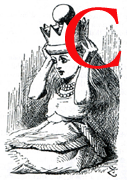 orelli's defence of the romance genre and her insistence on transcendental, post-Romantic aesthetic principles in her speculative writings can be considered part of her motivation to counter a contemporary crisis in art, which Walter Benjamin would, fifty years later, call the disappearance of the aura, which is lost in the modern process of duplication and imitation. The John Millais incident suggests that Corelli's search for transcendental depth in her aesthetic writing, too, manifests a fear of the disappearance of this mystical and special quality, which the artist's unique situation and personality give to a work.
orelli's defence of the romance genre and her insistence on transcendental, post-Romantic aesthetic principles in her speculative writings can be considered part of her motivation to counter a contemporary crisis in art, which Walter Benjamin would, fifty years later, call the disappearance of the aura, which is lost in the modern process of duplication and imitation. The John Millais incident suggests that Corelli's search for transcendental depth in her aesthetic writing, too, manifests a fear of the disappearance of this mystical and special quality, which the artist's unique situation and personality give to a work.
In a discussion with his publisher in Chapter IX of Corelli's The Sorrows of Satan (1895), the high-brow writer Geoffrey Tempest proclaims:
I am one of those who think the fame of Millais as an artist was marred when he degraded himself to the level of painting the little green boy blowing bubbles of Pears' soap. That was an advertisement. And that very incident in his career, trifling though it seems, will prevent his ever standing on the same dignified height of distinction with such masters in art as Romney, Sir Peter Lely, Gainsborough, and Reynolds. [80-81]
Corelli is referring to John Everett Millais's painting Bubbles, the copyright of which was bought in 1887 by the Messrs. A. and F. Pears to use it as an advertisement for their soap, adding a bar of soap and the company name to a corner of the coloured reproduction. The image became so well known that, after an initial period of using the child as an emblem in his own right, Pears was able to just use the head later.
There was a violent outpouring in the Press from sections of the artistic community, who protested against what they saw as a debasement of art. Millais himself, however, when he saw the reproduction of the picture as a poster, accepted the situation, although the painting was never intended for such use (Fleming, 285-286). In 1895, however, after Corelli's critical comment in her immensely popular novel, Millais felt he had to defend himself. He wrote a letter to Corelli, asking "What in the name of your 'Satan' do you mean by saying what is not true?" (qtd. in Fleming, 284) Her response from Folkstone, where she was vacationing, reveals the seriousness of Corelli's criticism (despite the melodramatic nature of her letter), namely that reproduction destroys the aura of a painting:
Dear Sir John Millais!
Your letter has had the effect of a sudden "bomb" thrown in upon the calm of my present "sea-side" meditations! — but I have rallied my energies at last; and I assure you "in the name of Satan" and all other fallen or risen angels that I meant no harm in the remark I put into "Geoffrey Tempest's" mouth concerning you. It is out of the high and faithful admiration I have for you as a king among English painters, that I get inwardly wrathful whenever I think of your "Bubbles" in the hands of Pears as a soap-advertisement! Gods of Olympus! — I have seen and loved the original picture, — the most exquisite and dainty child ever dreamed up, with the air of a baby Poet as well as of a small angel — and I look upon all Pears' "posters", as gross libels both of your work and you! [...] "Bubbles" should hang beside Sir Joshua's "Age of Innocence" in the National Gallery where the poor people could go and see it with the veneration that befits all great art. (Corelli, "To John Millais", 24 Dec. 1895)
The letter is written in Corelli's typically hyperbolical style, which resorts to dramatic metaphors and exclamations, but it still reveals the serious nature of her argument. Corelli declares that the original painting possesses a charm which lies in its mysterious, transcendental nature, its uniqueness and unreproducibility. This original aura, Corelli thinks, is threatened to be lost in the modern age of mechanical reproduction, advertising, and the commercialisation of art. This convergence of Benjamin with a mass-market bestselling writer he would have despised is surprising. It shows, however, that the crisis they both respond to, a popular nineteenth-century author and a high-culture critic of the early twentieth century, is felt on both ends of the literary scale and over a long period of time.
References
Corelli, Marie. The Sorrows of Satan. Ed. with an Introduction and Notes by Peter Keating. Oxford: Oxford University Press, 1998.
Corelli, Marie. "To John Millais". Autograph letter. 24 Dec. 1895. Ms. Dept. of Literary and Historical Manuscripts Collection, The Pierpont Morgan Library, New York. MA.1485 K186.
Fleming, G. H. John Everett Millais: A Biography. London: Constable, 1998.
Last modified 26 April 2005